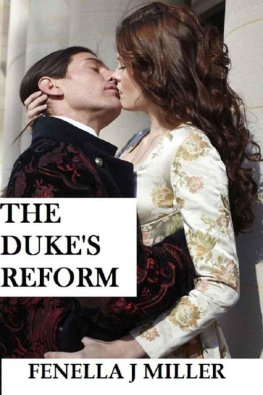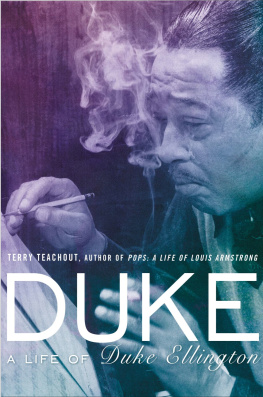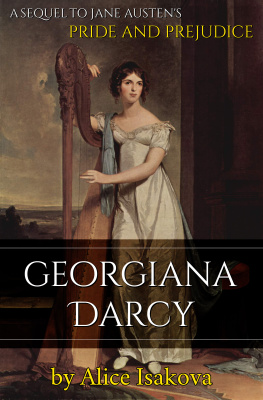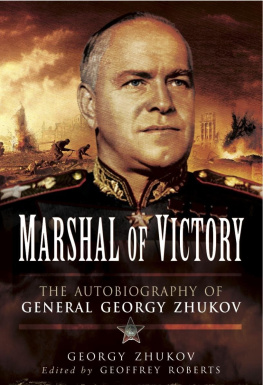Wellingtons
Dearest Georgy
The Life and Loves of Lady Georgiana Lennox
Alice Marie Crossland
with a foreword by Lord de Ros
2017 digital version converted and published by
Andrews UK Limited
www.andrewsuk.com
Originally published in 2016 by Universe Press,
an imprint of Unicorn Publishing Group
101 Wardour Street
London.
W1F 0UG
Text Copyright 2016, 2017 Alice Marie Crossland
Images Copyright 2016, 2017 For details, see Illustrations
All rights reserved. No part of the contents of this book may be reproduced, stored in or introduced into a retrieval system, or transmitted, in any form or by any means (electronic, mechanical, photocopying, recording or otherwise), without the prior written permission of the copyright holder and the above publisher of this book.
Every effort has been made to trace copyright holders and to obtain their permission for the use of copyrighted material. The publisher apologises for any errors or omissions and would be grateful to be notified of any corrections that should be incorporated in future reprints or editions of this book.
Front cover designed by Felicity Price-Smith
Interior designed by Maisie Franklin
Foreword by Peter Maxwell 28 th Baron De Ros
Last winter, with the 200 th anniversary of the Battle of Waterloo approaching, I took to reading through the many letters that passed between my ancestor Lady Georgiana Lennox, later Lady de Ros, and the 1 st Duke of Wellington. I was struck by their very deep affection for each other and the fascinating period of time in which they lived.
Having lived most of my life here in Strangford, alongside the lough and its beautiful surroundings, there is still a very strong feeling of Georgys influence here. The older parts of the garden are still laid out and landscaped as Georgy and William, her devoted husband, planned them.
I was introduced to Alice whilst she was researching the miniature given to Georgiana at the ball hosted by her mother, the Duchess of Richmond, the night before the Battle of Waterloo. Alices interest in Wellington, her enthusiasm and passion for the subject, was very obvious from the outset, so I invited her to come and see the collection of memorabilia and letters which are still in my familys possession. Her book is the result of three years of meticulous researching and writing.
Alice spent many weekends here in Strangford, where Georgiana is buried, painstakingly piecing together the story of her life and loves and particularly her extraordinary friendship with the Duke of Wellington. The result has brought Georgiana to life for me, as I am sure it will for many others, in this charming and enthralling book.
To Peter and Sian Maxwell,
who introduced me to Georgys story and who welcomed me so warmly into their home.
Introduction
Lady Georgiana Lennox was born on a perfectly ordinary Wednesday in 1795. As the fifth child in a rapidly growing family her birth passed without much fanfare. Her four elder brothers and sisters had already been passed on to an army of nurses, to be observed at tea time by Georgys beady-eyed mother, the future Duchess of Richmond. Over the years Georgiana, or Georgy as she was known to her closest friends and family, watched through wide eyes the arrival of nine more siblings. Each birth passed by Georgys parents without much alteration to their socialising and sporting regime. Such was the way for most eighteenth-century aristocratic families. Each Lennox baby grew healthy and strong, largely ignored by their mother and doted upon by their father. So begins the story of Georgy Lennox; for despite the fact that Georgy would become neither extremely famous nor wealthy, her story is entwined with that of one of the most celebrated men in British history: the 1 st Duke of Wellington.
Moving through Europe in her teens Georgy was witness to some of the most significant moments of the nineteenth century. She had a front row seat to the events in Brussels in June 1815, when Napoleon Bonaparte escaped from exile and marched towards an Allied Army, with Wellington its Commander-in-Chief. The resultant Battle of Waterloo is arguably the most famous battle in British history, securing a lasting peace with France. Georgy and the Iron Duke, as he later became known, were close friends in the years before and after the battle and the true nature and intimacy of their relationship has long been disputed.
Why Georgys story is not more widely known remains to be fully determined. She never gained the heights of celebrity like Marianne Patterson or Harriet Arbuthnot, two other of Wellingtons Women, despite the fact that she and Wellington enjoyed forty-six years of friendship together. He was an influential part of Georgys life and clearly cared for her very deeply. Georgy herself was certainly besotted with the Duke from a young age and recorded much of their meetings and her thoughts about him in a diary throughout her life. After her death however, her diary was destroyed by her daughter Blanche, after she had transcribed small fragments from it over the years. Also gone were many of her more personal keepsakes which had been preserved in loving memory of a man that she treasured as much as any member of her own family. Wellington in turn destroyed every single one of Georgys letters to him, in an attempt to cover up the intimacy of their friendship.
However, by working through public and private records, letters and artefacts, the story of Georgy Lennox and the Duke of Wellington has now been pieced back together again and can be told in full for the first time.
Chapter 1: The Great Sir Arthur
Genl Lennox...is a most friendly man, perfectly free from pride, but the Dss [Duchess] is of an opposite disposition being excessively proud and disdainful of persons of inferior rank.
The diarist Joseph Farington on the 4 th Duke and Duchess of Richmond
Georgy was born into the dynastic Lennox family that made up the Duchy of Richmond, Lennox and Aubigny. The 1 st Duke of Richmond had been the natural son of Charles II and his glamorous French mistress Louise de Krouaille, Duchess of Portsmouth. The Richmonds principal estate was Goodwood House in Sussex and they also had a palatial home in Whitehall, London. By end of the eighteenth century the Richmond family was second perhaps only to the Royal Family in terms of social influence and power. They lived in some of the most luxurious and fashionable abodes, travelled widely, and befriended or married into other upper class families. At the many balls and soires the Lennoxes attended, they mingled with other aristocrats and society figures, safe in a gilded world of luxury and privilege.
Georgys father Charles Lennox was the son of Lord George Lennox, nephew of the 3 rd Duke of Richmond and Lady Louisa Kerr, daughter of the 4 th Marquis of Lothian. Charles Lennox was extremely popular amongst his family and his peers. He was a keen sportsman with a special love for the game of cricket, which had become universally popular through the efforts of his grandfather the 2 nd Duke of Richmond. As a young man Charles took his place in the Army and soon gained a reputation as a fun-loving and headstrong young buck.
In 1789, in the space of two short months, Charles Lennox fought two duels. In eighteenth-century English society, this was considered the gentlemanly way of settling a dispute. Each participant was provided with a pair of pistols and chose a second to step in if they were mortally wounded. Each man was allowed a single shot and could decide whether or not they aimed to kill. Charless first duel was held on Wimbledon Common, and was against none other than the Duke of York, King George IIIs second and favourite son, and also Charless Commanding Officer. Charles was an excellent shot, and the Duke of York had a narrow escape when the bullet shot off one of the curls on his wig. The Dukes own pistol failed to fire. Whether Charless action had been extremely brave or extremely stupid was discussed at length by the gossip-loving London society, and the incident certainly sealed his reputation as a man of action who would go far. Only two months after this extraordinary event, Charles Lennox fought another duel against a man who had published a pamphlet that slurred his character. Theophilus Swift was hit in the body by Charless shot, but the injury did not prove fatal. The details of these legendary duels were often told by Charles to his children, many years later, who would grow up idolising their brave and daring Papa.
Next page








